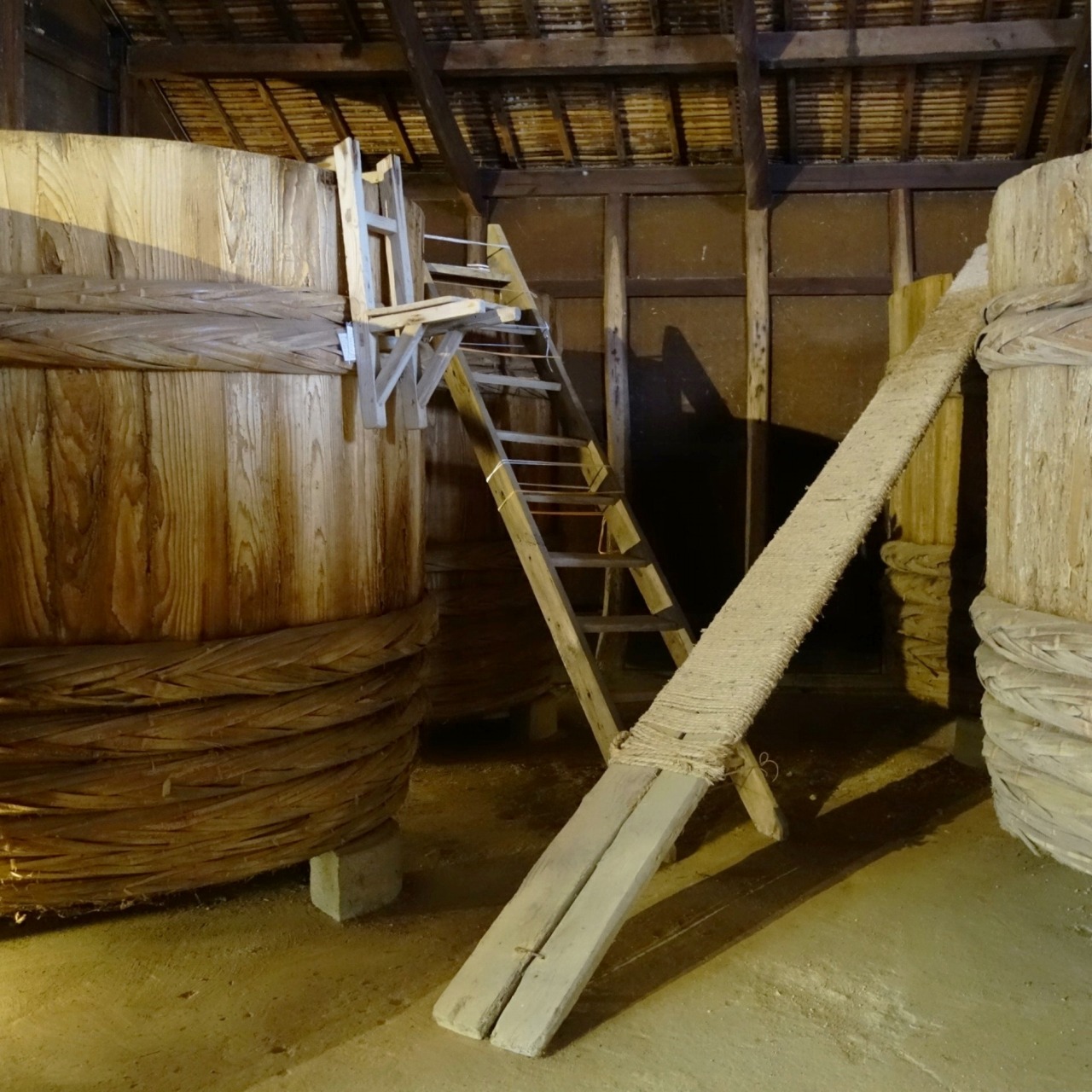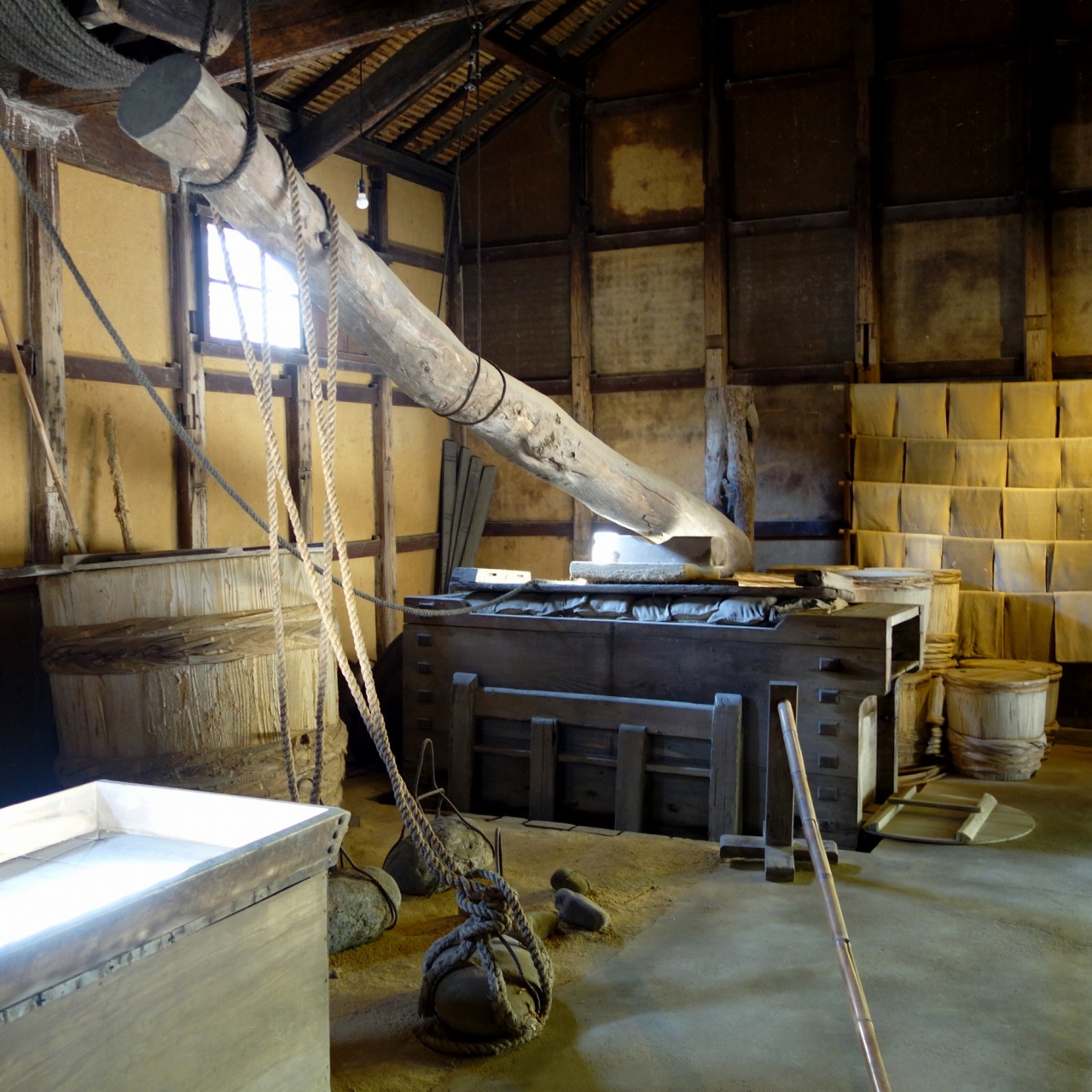Soy Sauce Brewery
- Period:
Latter half of 1800s (Early Meiji Period)
- Former Location:
Hikeda, Higashikagawa, Kagawa Prefecture
- Designation:
Important Tangible Folk Cultural Asset
A building and tools that made traditional Japanese flavor
Kagawa Prefecture has long been a center for making shoyu (soy sauce), and from the end of the 19th century into the 1930s and 40s, it was among the nation’s leading producers. This brewery is from old Hikida, once a soy sauce center in the area, and all three buildings were part of a facility used for years by a shoyu brewing family. Some parts of the building are in their original state, like the late-18th century beams. The shikomi oke (wooden fermentation tanks) and oshibune (levered press) have almost vanished from modern use, but these traditional tools recreate the methods used to brew shoyu in those days.

Shikomikura (Fermentation building)
Shoyu koji (a fungus used in traditional fermentation) made in a koji mold growing house was mixed with salt water in these shikomi oke, which were made in 1836. A tool called a kai, which consists of a wooden pole with an oval board on one end like an oar, was used to stir the shoyu during fermentation, in an important part of the process called kai ire.

Oshibune Press
After about a year of fermentation and kai ire, the moromi, or mash, was ready for the pressing process. Just like in sake brewing, shoyu mash is put in bags and then laid in this box. Then, pressure is applied to the top and over ten days the liquid shoyu is slowly separated from solids in the mash.





























